September 24, 2024
What is the Significance of 9 colours in Navratri

Club Mahindra
Navratri is a vibrant and spiritual nine-day Hindu festival celebrated with great enthusiasm across India, symbolising the victory of good over evil. Each day of Navratri is dedicated to a different form of Goddess Durga, and it is marked by fasting, dancing, and prayers. One of the unique traditions associated with Navratri is the significance of colours. Every day is assigned a specific colour, which devotees wear to honour the goddess and participate in the festivities. The colours of Navratri are traditionally assigned to each day, with a unique shade representing the spiritual energy of the goddess. For Navratri 2024, devotees will follow a unique sequence of colours to mark the divine significance of each day. Embracing the different colours of Navratri during the Navratri 9 days colour tradition brings joy and unity to the festival.
Additionally, Navratri is known for its vibrant cultural dance forms, Dandiya and Garba, which are performed during the evenings of the festival. These energetic dances are a way for devotees to celebrate the goddess with rhythm and music, making the festival even more lively and joyous. Dandiya, in particular, involves the use of decorated sticks, symbolizing the fight between good and evil, adding to the festive spirit.
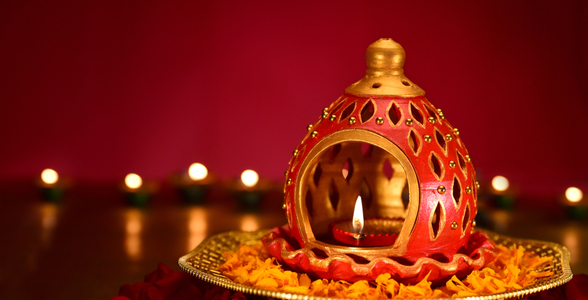
In 2024, Navratri will begin on Thursday, October 3, and will conclude on Friday, October 11. The festival spans nine days, dedicated to the worship of Goddess Durga and her various forms, with each day marked by different traditions, rituals, and colours.
The 9 colours of Navratri hold deep spiritual significance, with each colour representing a different attribute of the Goddess Durga. During the nine days, devotees wear these colours to invoke the divine energies of the goddess, creating a powerful connection between spirituality and festivity. The 9 colours in Navratri are believed to bring positivity, prosperity, and protection.
Each of the 9 colours of Navratri corresponds to a different form of Goddess Durga, symbolising virtues like strength, tranquillity, and devotion. By adorning these colours, devotees pay tribute to the goddess and celebrate her divine feminine energy, which overcomes darkness and brings forth light and positivity.
Nine colours of Navratri:
The 9 colours of Navratri are traditionally associated with each day of the festival, symbolising different aspects of Goddess Durga. The colours and their meanings may vary slightly, but they generally follow this pattern:
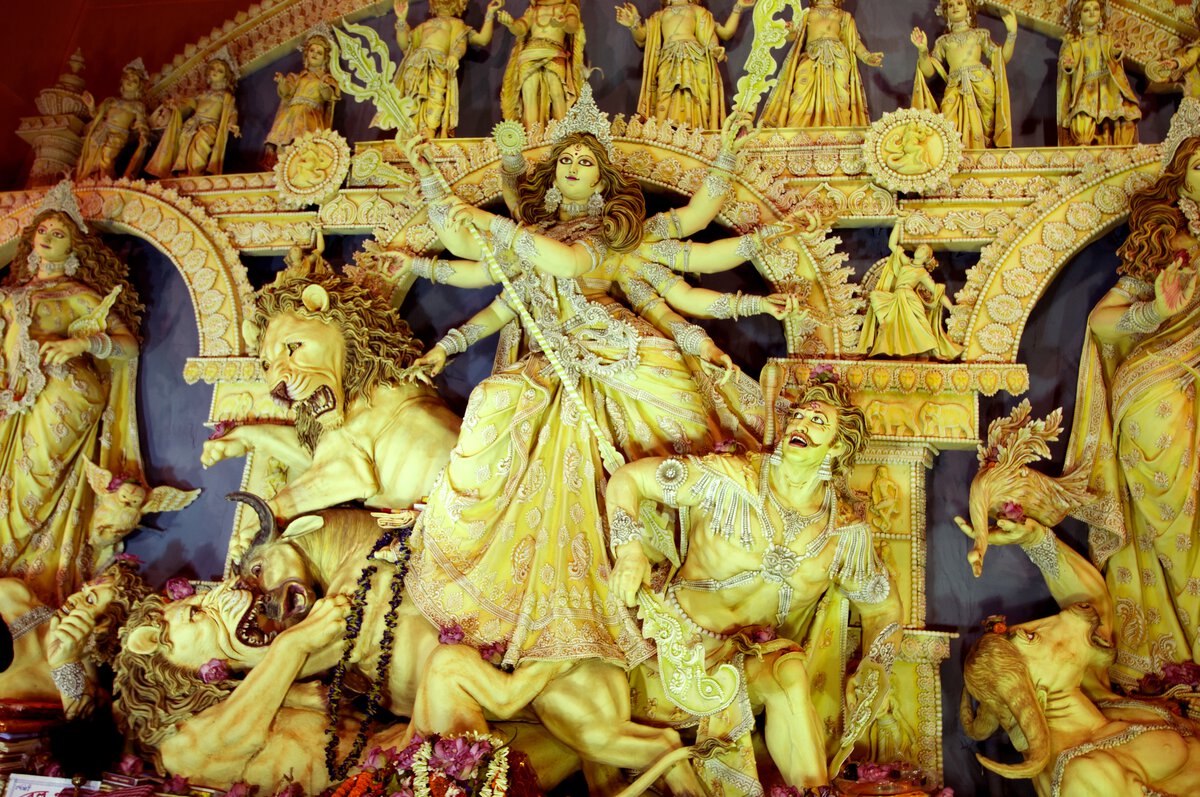
Pratipada (Yellow) marks the beginning of Navratri with the vibrant and joyful energy of the colour yellow. This day is dedicated to Goddess Shailaputri, the first form of Goddess Durga. The colour yellow symbolizes happiness, positivity, and new beginnings, setting a bright tone for the festival. As devotees wear yellow on this day, they embrace its warmth and celebrate the divine power of the goddess. The colours of Navratri not only enhance the festive spirit but also bring spiritual meaning, with each hue representing the virtues of the goddess.
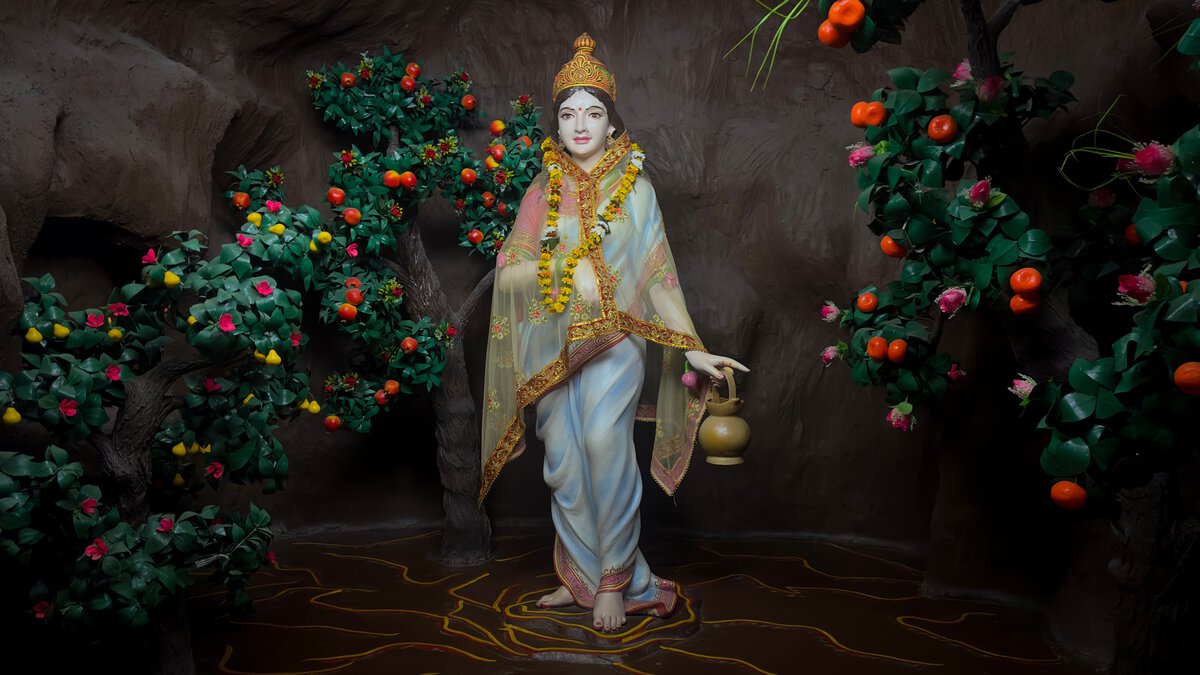
Dwitiya (Green) is a celebration of renewal, growth, and harmony. This day is dedicated to Goddess Brahmacharini, symbolizing devotion and wisdom. The colour green represents nature, fertility, and fresh beginnings, reflecting the rejuvenating energy of the goddess. Wearing green on this day signifies a connection to these qualities and promotes balance and tranquillity. The different colours of Navratri reflect the diverse virtues of Goddess Durga, with each shade, like green, bringing its own spiritual significance to the celebrations.
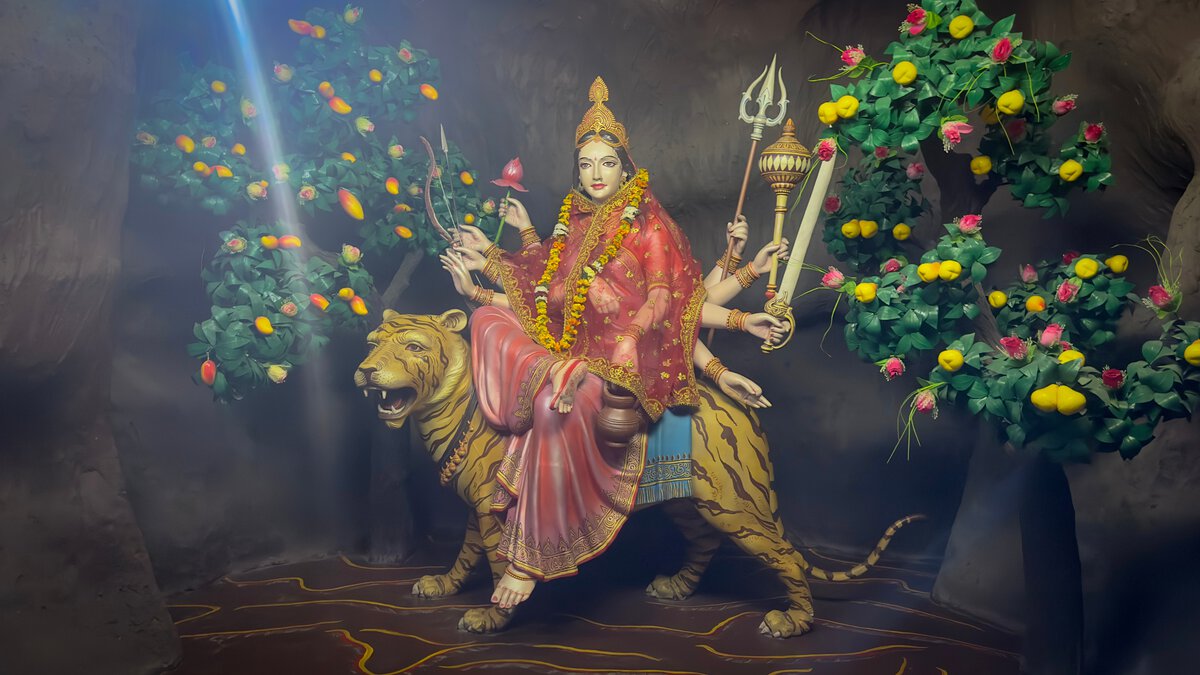
Tritiya (Gray) is dedicated to Goddess Chandraghanta, a form of Durga known for her bravery and strength. The colour Gray, symbolising balance and calm, represents the strength to face challenges and overcome negativity. It reflects the qualities of peace and composure amidst chaos. Wearing Gray on this day is believed to invoke the goddess’s protection and inner strength. The colours of Navratri, like Gray, are chosen to symbolise different virtues of the goddess, with each colour reflecting a unique spiritual aspect of the festival.

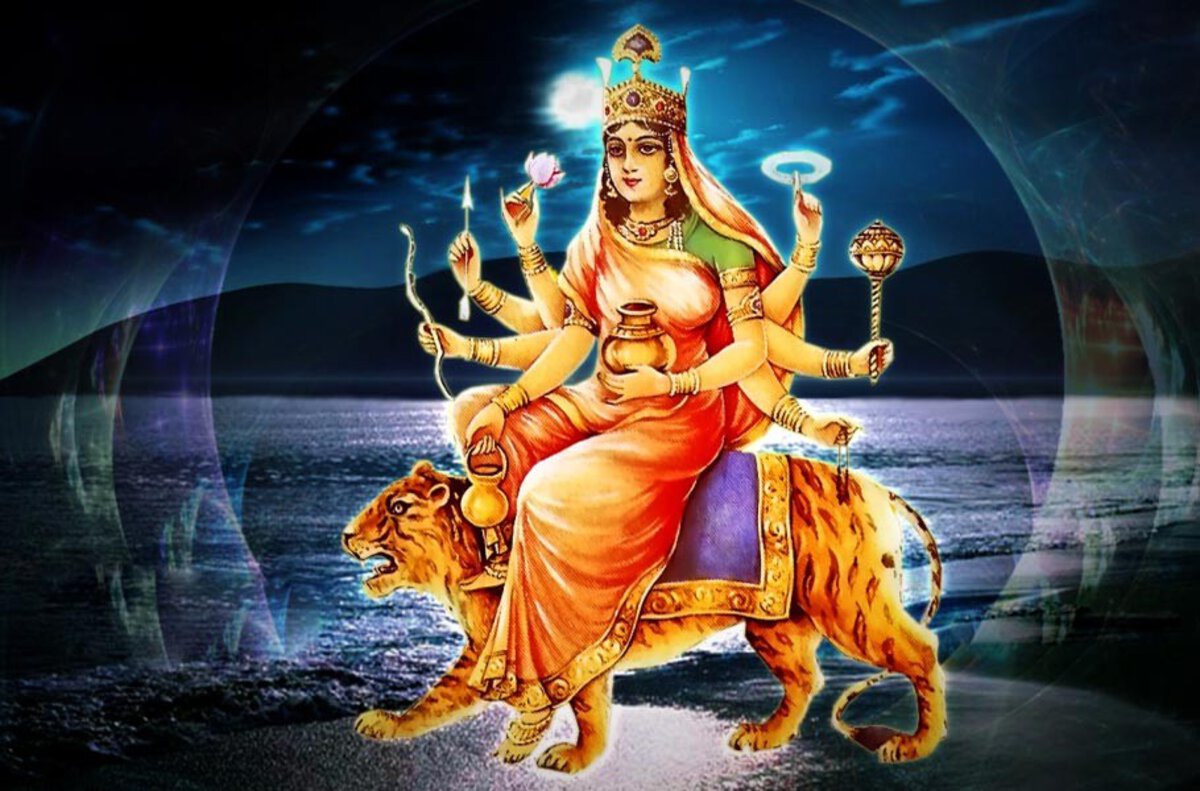
Chaturthi (Orange) is dedicated to Goddess Kushmanda, known as the creator of the universe. The vibrant colour orange symbolises energy, enthusiasm, and warmth, reflecting the goddess’s role in infusing the world with light and life. Wearing orange on this day invokes her power to bring positivity and vitality. As part of the 9 colours in Navratri, orange represents the dynamic and creative energy of the divine, inspiring devotees to embrace life with optimism and strength.
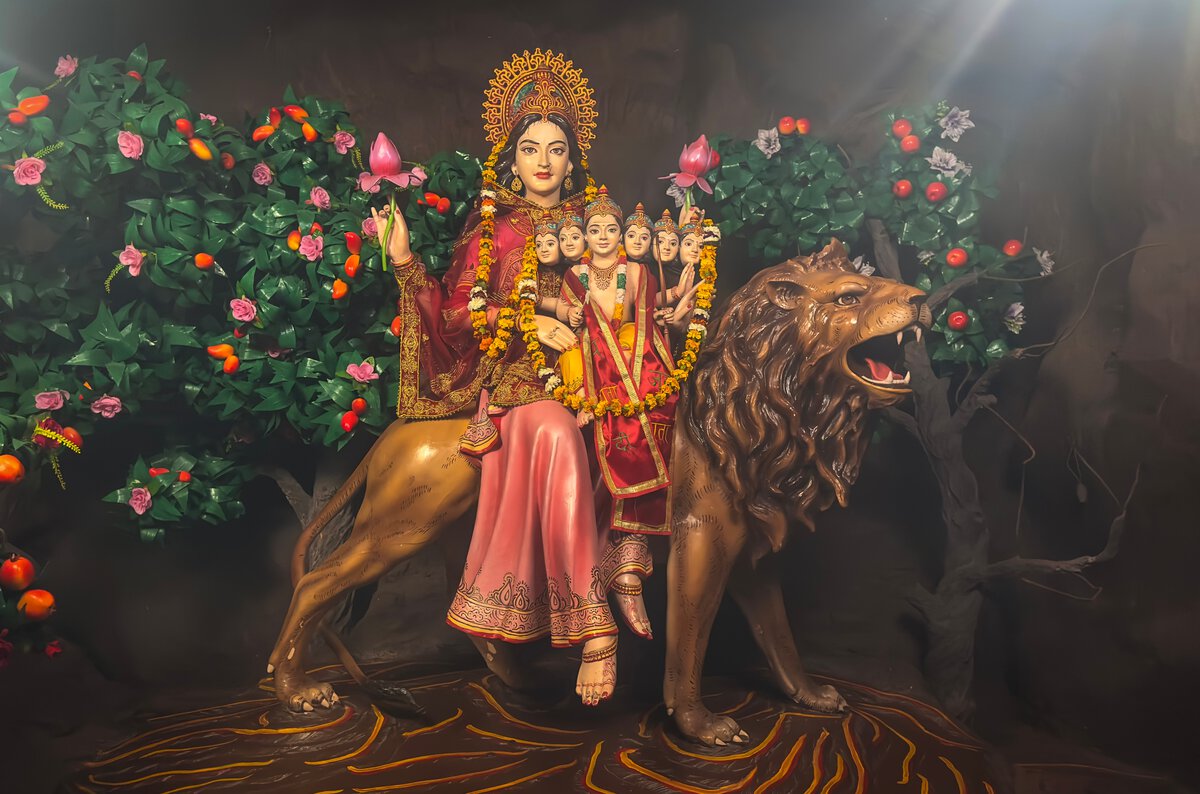
Panchami (White) is dedicated to Goddess Skandamata, the nurturing mother of Lord Kartikeya. The colour white symbolizes purity, peace, and serenity, embodying the motherly and protective qualities of the goddess. Wearing white on this day invokes a sense of calmness and purity, aligning with the goddess's divine and compassionate nature. As one of the significant colours of Navratri, white represents the purity of heart and mind, encouraging devotees to seek inner peace and spiritual clarity during the festival.
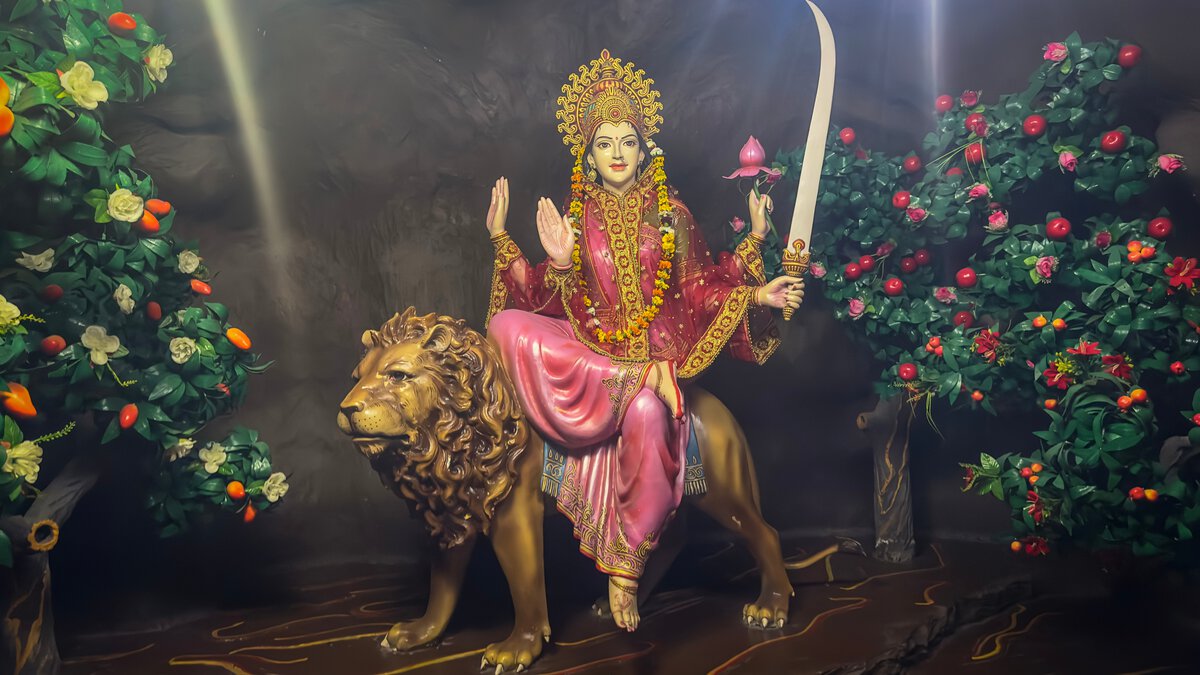
Shashti (Red) is dedicated to Goddess Katyayani, a fierce and powerful form of Durga known for her courage and strength in vanquishing evil. The colour red symbolizes passion, love, and power, representing the goddess’s fiery energy and determination. Wearing red on this day invokes these strong emotions and qualities, encouraging devotees to embrace strength and courage in their own lives. As part of the Navratri 9 days colour tradition, red reflects the intensity and force of divine feminine energy, making it a day of empowerment and vitality.

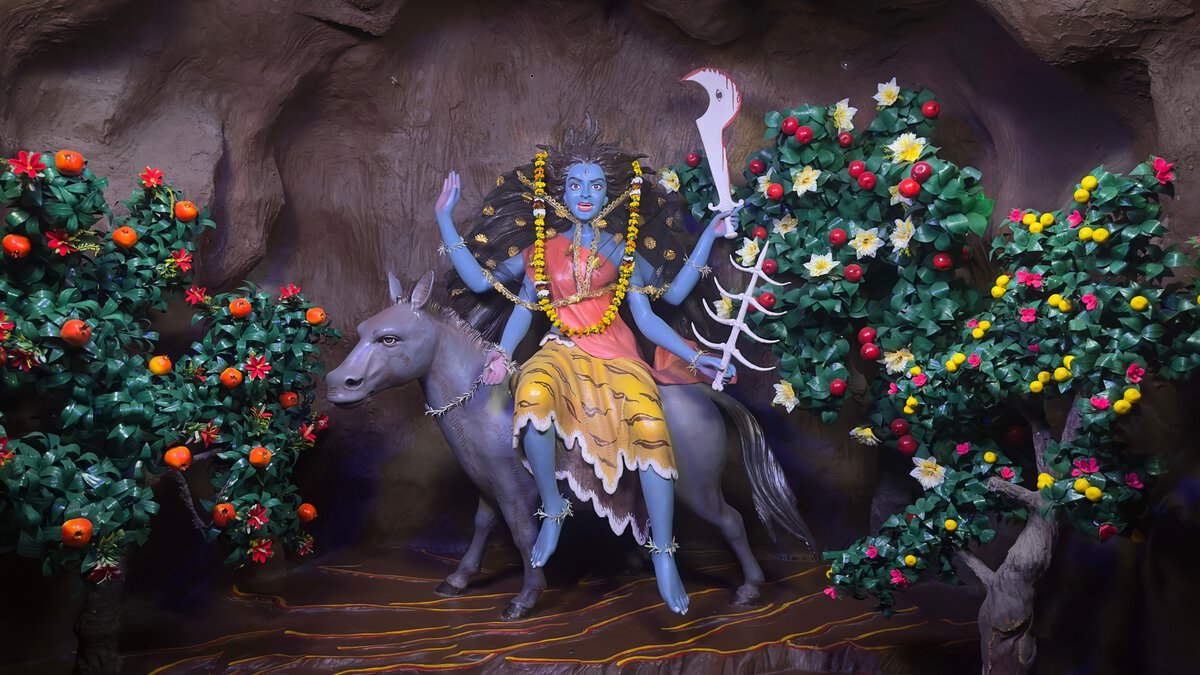
Saptami (Royal Blue) is dedicated to Goddess Kalaratri, known for her fierce and protective nature. The colour Royal Blue signifies immense power, divine energy, and tranquillity. Wearing this colour on the seventh day represents the vastness of strength and the depth of wisdom. As one of the significant colours of Navratri, Royal Blue embodies calmness and authority, allowing devotees to channel inner strength and peace. This shade in the Navratri 9 days colour tradition highlights the powerful yet serene nature of the goddess.
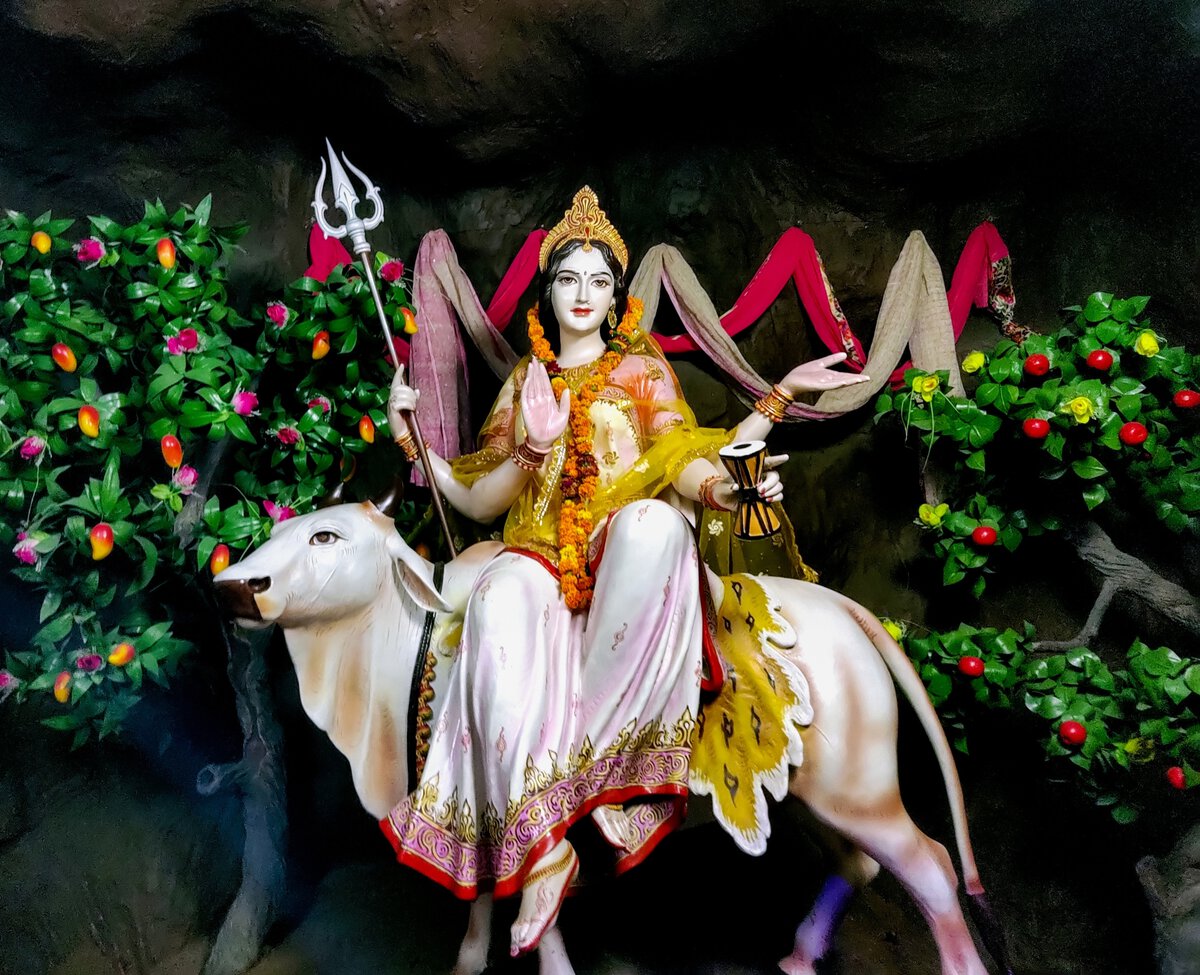
Ashtami (Pink) is dedicated to Goddess Mahagauri, who symbolizes purity, compassion, and tranquillity. The colour pink represents love, compassion, and nurturing energy, reflecting the gentle and kind nature of the goddess. Wearing pink on this day signifies universal love and harmony, as well as the soft, compassionate qualities of the divine feminine. As part of the Navratri 9 days colour tradition, pink is a reminder of the goddess’s nurturing side, bringing peace, harmony, and positive energy to the celebrations.

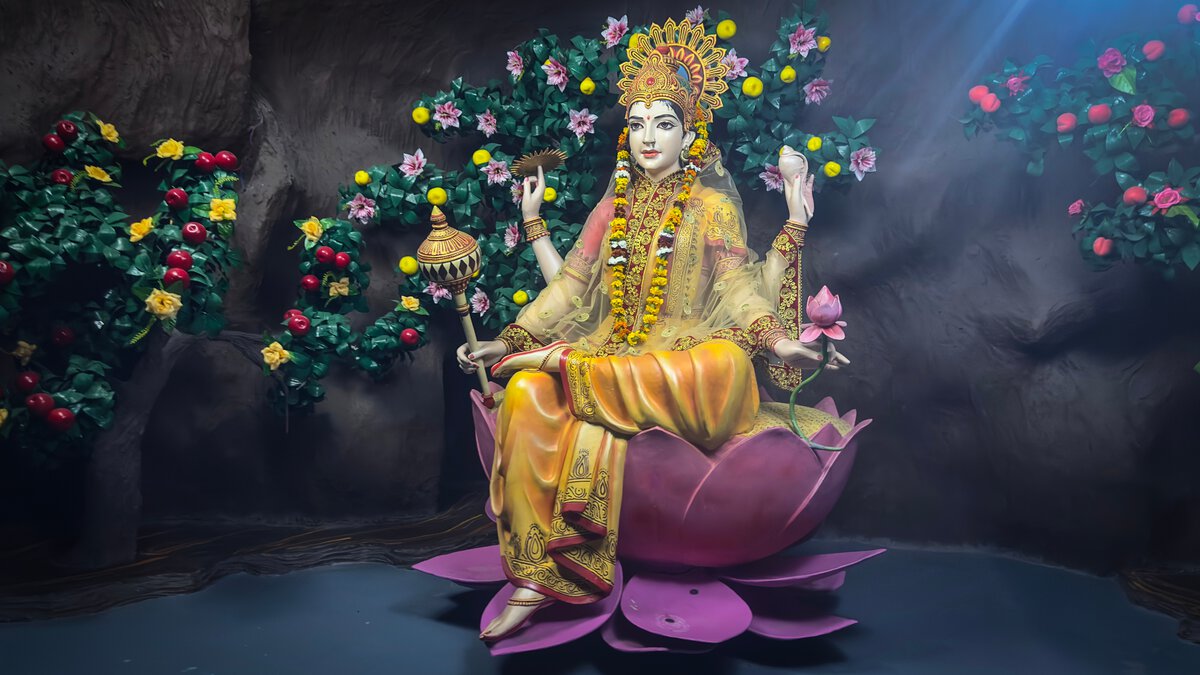
Navami (Purple) is dedicated to Goddess Siddhidatri, the granter of supernatural powers and spiritual knowledge. The colour purple symbolises ambition, power, and spirituality, making it a fitting choice for the final day of Navratri. Wearing purple on this day is believed to invoke the blessings of the goddess, helping devotees achieve spiritual enlightenment and fulfilment of desires. As part of the colours of Navratri, purple represents the culmination of the festival, where divine energy and wisdom come together, marking a powerful conclusion to the nine-day celebration.

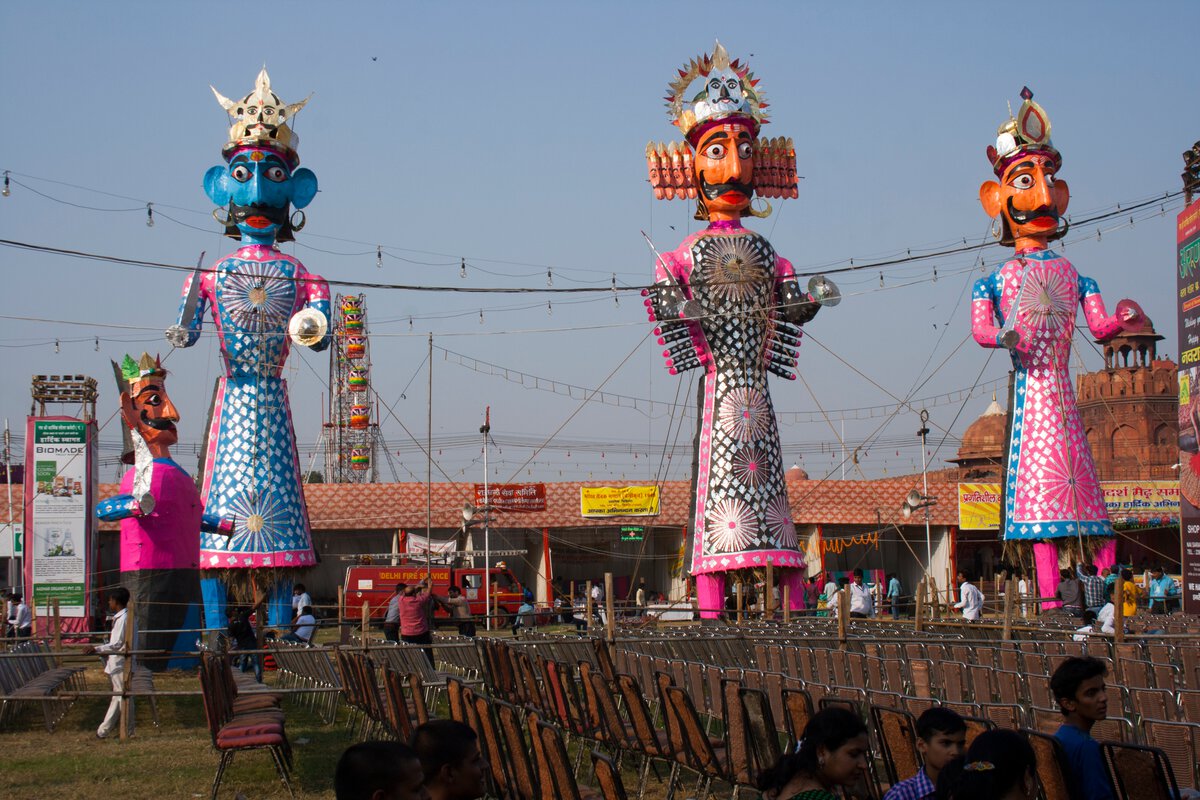
(Dussehra) marks the culmination of Navratri, celebrated on October 12, 2024. This day is seen as an auspicious time for fresh beginnings, making it ideal for starting new ventures or important activities in life. It is also observed as Vidyarambham, a significant ritual where young children are introduced to the world of education, symbolizing the start of their learning journey.
Additionally, In West Bengal, the day is highlighted by the tradition of Sindhoor Khela, a vibrant ritual where married women playfully apply sindoor (vermilion) to each other, holds deep cultural importance on Vijayadashami, celebrating the strength and blessings of the goddess.
There are four major types of Navratri celebrated throughout the year, each with its unique significance and rituals. These are:
Each type of Navratri honours a different aspect of the divine feminine, with Sharad Navratri being the grandest and most widely recognized across India.
Navratri is a vibrant and spiritually significant festival that symbolizes the triumph of good over evil. The unique tradition of the colours of Navratri adds a deeper meaning to the celebration, with each day marked by a specific hue representing different virtues of the goddess. In Navratri, devotees follow a sequence of colours, each one carrying spiritual significance and encouraging a connection to the divine feminine energy. By embracing the different colours of Navratri, the festival becomes a celebration of unity, positivity, and devotion, filling the lives of devotees with light, hope, and prosperity.
A Club Mahindra membership brings a host of perks that make vacations both seamless and enjoyable. With access to more than 140+ Club Mahindra resorts across India and international destinations, members can discover a variety of scenic spots, from serene beaches and lush hill stations to deserts and dense forests. The membership offers flexibility, allowing members to plan their holidays according to preferred dates and seasons. It ensures years of well-maintained, spacious family accommodations, creating perfect settings for relaxation. Members also enjoy exclusive benefits, including special deals on dining, spa services, and curated experiences. Backed by positive member reviews and feedback, a Club Mahindra membership promises unforgettable, hassle-free vacations for the long term.
Yes, resorts in Gujarat celebrate the Navratri festival with full vigour. Here are the Club Mahindra resorts in Gujarat, offering a perfect combination of comfort, nature, and cultural experiences.
Club Mahindra Gir Resort – This resort in Gir is located near Gir National Park, known for its wildlife and the famous Asiatic lions.
Club Mahindra Kensville Golf Resort, Ahmedabad – A luxurious stay set around a golf course, offering a peaceful and scenic stay resort in Ahmedabad.
Club Mahindra Dwarka Resort – A tranquil resort near the sacred town of Dwarka, offering a perfect blend of relaxation and spirituality.
Club Mahindra Netrang Resort, Nandej – A peaceful retreat nestled in nature, ideal for relaxation and cultural exploration in the heart of Gujarat.
Bhanu The Fern Forest Resort, Jambughoda – A serene forest retreat located in Jambughoda, offering a perfect escape into nature with luxury and tranquillity in Gujarat.
Boulevard 9 Nadiad Resort, Gujarat – A luxurious resort in Nadiad, offering a blend of comfort and elegance, perfect for a relaxing getaway in Gujarat.
These resorts offer a perfect blend of nature, relaxation, and cultural experiences, making them ideal for visitors exploring Gujarat. Whether nestled amidst scenic landscapes or close to cultural landmarks, each resort provides a serene escape. In addition to the tranquil surroundings, the resorts' in-house restaurants serve some of the best food, allowing guests to enjoy delicious and authentic cuisine without leaving the property. From local Gujarati delicacies to a wide range of other flavours, the dining experiences complement the overall stay, ensuring a fulfilling and relaxing vacation.
Mahindra Holidays & Resorts India Ltd. (MHRIL), a part of Leisure and Hospitality sector of the Mahindra Group, offers quality family holidays primarily through vacation ownership memberships and brings to the industry values such as reliability, trust and customer satisfaction. Started in 1996, the company's flagship brand ‘Club Mahindra’, today has over 300,000 members , who can holiday at 140+ resorts in India and abroad.